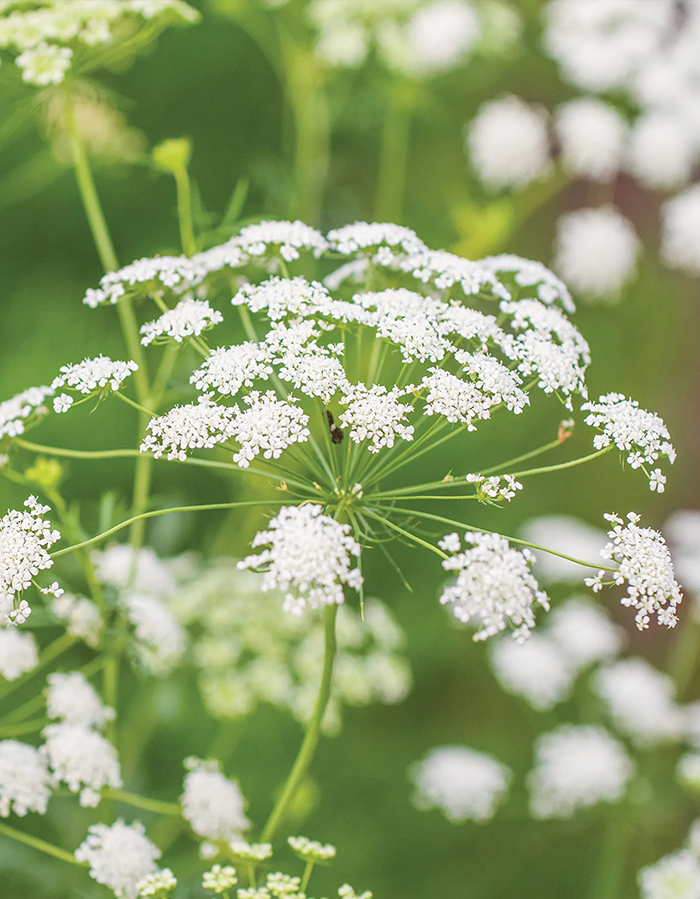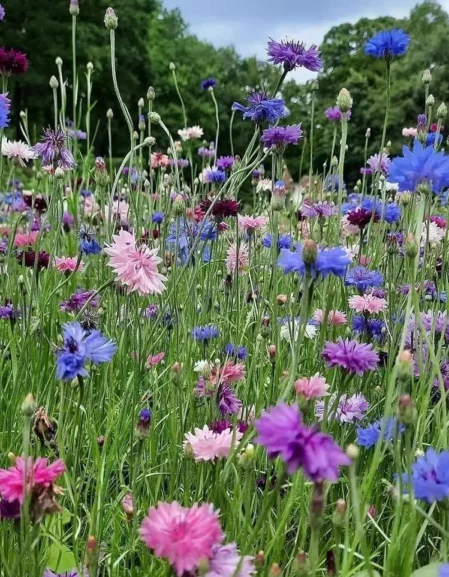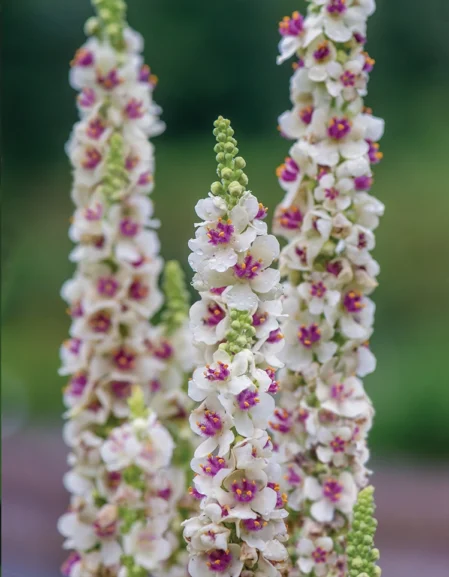Ammi majus (Bishop’s Flower) – Soft, Lacy Umbels That Bring Air and Light
Ammi majus, often called Bishop’s Flower, carries wide umbels of finely cut white florets that seem to float above the garden on delicate branching stems. Plants reach around 90 to 120 cm and create a soft drift of colour that blends effortlessly with roses, grasses and summer perennials. It has long been a favourite in cottage gardens because it threads itself so gracefully through borders, adding height without weight and giving everything around it a gentler, more natural feel.
These airy umbels are also exceptional for cutting. They lift arrangements with ease, soften bold colours and are one of the finest white filler flowers you can grow.
Growing Conditions
Grow in full sun and well drained soil. Bishop’s Flower prefers open ground with plenty of space and airflow, which helps keep the tall stems clean and upright. It is an annual that is not frost tolerant, so early sowings must be protected. A sheltered position avoids wind rocking the taller plants.
Planting Guide
Sowing Indoors: February to April. Sow 3 mm deep in seed compost and keep at 15 to 18 °C. Germination usually takes 10 to 21 days.
Transplanting: Pot on when seedlings can be handled, then harden off before planting out after frost.
Direct Sowing: April to May once soil has warmed properly.
Spacing: 30 to 40 cm apart to give each plant room to branch and form wide umbels.
Care and Maintenance
Watering: Keep soil evenly moist while plants establish. Mature plants cope with short dry spells but flower best with regular moisture.
Feeding: A balanced liquid feed every two to three weeks encourages strong, clean growth and more flowering stems.
Supporting: Staking or mesh support may be needed in exposed beds.
Deadheading: Remove spent umbels to extend the display or allow a few to set seed if a natural, self sowing effect is desired.
Safety note: Some people experience mild skin irritation when handling Ammi majus, so gloves are recommended.
Flowering and Cut Flower Tips
Flowering typically begins in June and continues well into September. Cut stems when most florets on each umbel have opened. Condition in deep, cool water for several hours. The finely cut flowers add lift and softness to mixed bouquets and work beautifully alongside roses, phlox and scabious.
Garden Impact
Bishop’s Flower brings air, height and gentle movement to borders, settling naturally among other plants and creating a relaxed, flowing look. The open umbels attract bees, hoverflies and other beneficial insects. Its lacy structure softens the edges of planting schemes and creates a romantic, hazy layer that ties mixed borders together.





